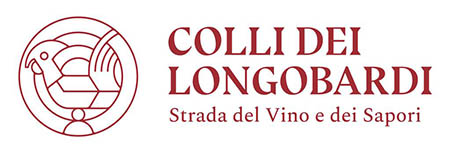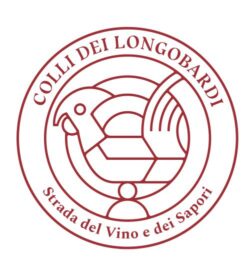UNESCO site – Italy langobardorum
The Wine’s Street “Longobard’s Hills”, in collaboration with the Longobard Association has actively supported, with many local actions, the serial candidacy UNESCO called “LANGOBARDORUM ITALY- The Longobards in Italy. Places of the power (568-774 d.C)”, which, with other six nationals sites, also includes the city of Brescia. With this candidacy, the archaeological sites of Longobard origin of Cividale dei Friuli, Brescia, Castelseprio Torba, Spoleto, Campello sul Clitunno, Benvento and Monte S. Angelo, have started an itinerary by which can be included in the list that contains the recognized sites as heritage of the humanity to protect and to preserve. Now Longobard italian sites have finally been accepted by the International Commission, so Brescia can claim to be registered in the list of the mondial heritage of UNESCO with three sites of mondial interest.
1. “Rupestrian inscriptions of Valcamonica”
2. “Longobardorum Italy” with the Basilica of S. Salavatore
3. “Palafit prehistorical sites of Arc Alpin”
The serial site “Longobards in Italy. Places of the power. (568-774 d.C)” includes the most important monumental vestiges of Longobards present on the italian’s territory, which is situated from the nord to the south of the peninsula, where there were the dominions of the most important Longobards Duchys which formed the first italian “nation”. In particular the Longobard Temple In Cividale of Friuli (UD), one of the most original buildings and also between the most known of the old Longobard age with the ruins of the “Episcopal Complex” renewed by Callisto and the National Archeological Museum, where are exposed the precious outfits of the longobards necropolis, the monastic complex of S. Salvatore – S. Giulia in Brescia, now seat of the“Museum of the city” aa extraordinary architectural palimpsest which inglobes the women’s monastery built by the Duke Desiderio before becoming king, registered with the adjacent archeological monumental complex where are conserved the most important romain buildings of the nord of Italy: the castrum of Castelseprio – Torba (VA), which conserves important examples of military architecture with the known Church of S. Maria foris portas, situated out of the area occuped by the medieval village, where is conserved one of the most important pictorial texts of the Middle Age.
The Clitunno’s Temple in Campello (PG), the famous, little building which, for his classic form, since the Renaissance was object of attention of the biggest architects which have immortalized the imagine in the centuries; the S. Salvatore Basilic in Spoleto (PG), an exceptional building for the classic romain language with which was conceived ,which still conserve outside and inside significated fragments of old architectural decoration and decorative elements ably carved by medieval stone-cutters; the Church of S. Sofia in Benevento – one of the more complex longobard structure and better preserved of that age, which on walls still have important texts of medieval pictorial cicles, most important evidence of the cd.Benevento’s painting”-, with the adjoining cloister where today is situated the Museum of Sannio; the Garganico’s Sanctuary of San Michele in Monte Sant’Angelo (FG) which, since the VII century,with the Longobards, became the most important place of worship of S.Michele, influencing profoundly the diffusion of the devotion for S. Michele in all the west and becoming a model for the hundreds of sanctuaries built in the rest of Europe, included the most famous Mont-Saint-Michel between Bretagne and Normandie.
The goods included in the site, thanks to a rigorous and accurate selection, represent, each for his specific typology, the more evident model or the more conserved between the several evidences spread on the national territory and, together,reflect the universality of the Longobard culture in her best period. So they represent the quintessence of the artistic and architectonic heritage of “gentes Longobardorum, as known, they expressed themselves with monumental forms only after their standing in Italy, after a long period of migration, from the Scandinavia and through the states of nord-east of Europe. When the Longobards arrived in Italy assimilate the romain tradition , the spirituality of Christianity, the Bizantin’s influences and they integrated them with their Germanic values, creating, between the end of the VI and the VII centuries, a new and original culture. Longobards are situated between the principal protagonists of the complex period of transition between the Antiquity and the Middle Age; they started that cultural process, inherited from Carlo Magno, who transformed the ancient world and contributed to the formation of the medieval Europe, influencing the following millenium of the West history.
So a recognition, that of UNESCO, which sanctions have the contemporary studies and stops the concepts of “decadence”, “end of civility” and “barbarism” which were generally associated to the period between the end of the Romain Empire to the beginning of the Carolingian, arguing instead,- in a vision now particularly current- the idea of the continuity of the historical process, characterized by the intermingling of different cultures. The inscription of the site “Longobards in Italy. Places of power” is also a recognition of the efforts of numerous public and private institutions which, involved at different levels in the management of the same goods or territories, since 2006 have worked and are working together – on the basis of the principles of subsidiarity and cooperation enshrined in Europe – not only for the success of the application, but also to raise the level of appreciation of evidence Longobarde and dissemination of their knowledge. Among the several partners (5 Regions, 6 Provinces, 8 municipalities, 2 mountain communities, 4 Dioceses, a park, the FAI, CAB Foundation and two important centers of studies, the CISAM – Italian Centre for Studies on Medieval Studies and the Center-Michael and Garganico, which have greatly contributed to the advancement of knowledge about the Longobard civilisation ) it must be remembered the Ministry of Cultural Heritage and Activities, with 5 regional directorates and 17 local Superintendents. The Ministry, which coordinated the work for the nomination, continues to support and accompany the sites through the participation in the Association Langobardorum Italy, the management structure promoted by the municipalities that coordinates the actions and implementation of network activity.



